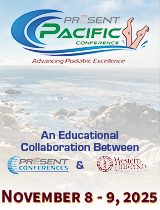06/22/2023 David Secord, DPM
Therapeutic Injections of Dextrose (Jeffrey Kass,, DPM)
Every few years, the topic of prolotherapy seems
to rear its head. The detractors point out that
there are no studies establishing efficacy.
Its supporters point out their level V (in the
hierarchy of clinical evidence schema) success
rates in their patient base. If anyone cares,
here is some background:
From an interview with Dr. Paul H. Goodley, MD, by
Carol Peckham Published: 08/19/2009:
Dr Goodley: Prolotherapy, [otherwise known as]
regenerative injection therapy (RIT) or
reconstructive ligament therapy, was developed
about 60 years ago and is a fundamental, effective
injection therapy for the repair of injured
connective tissues, such as ligaments and tendons.
Sclerotherapy and prolotherapy had previously been
used synonymously.
"Sclerotherapy" was the original osteopathic
designation. Precisely, it is the term used when a
true sclerosant is desired for the treatment of
varicose veins, esophageal varices, hemorrhoids,
or hernias. Prolotherapy involves injecting a
solution that causes the capillary beds in the
injured area to reopen. They do this because the
reflexes are literal and interpret the presence of
the injected material as injury.
After the usual time, however, as with natural
healing, the capillary bed recedes again. So, to
keep it open for the time necessary to maximize
healing, especially after major injury, the
injections are usually re-administered in a series
over a period of weeks or a few months as its
effectiveness is assessed. Prolotherapy
was first named and systematized for orthopedic
application by George S. Hackett, a general
surgeon, in the mid- 1950s,[1-3] when orthopedic
surgeons were becoming fascinated with disc
herniation.
From Dr. Goodley: prolotherapy solutions are used
to initiate connective tissue proliferation. The
degree of concomitant inflammation varies and has
evolved over time. There are basically 3 classes
described: chemical irritants (e.g., phenol),
osmotic shock agents (e.g., hypertonic dextrose
and glycerin), and chemotactic agents
(e.g., morrhuate sodium, a derivative of cod liver
oil). The solutions George Hackett used in
1939were severe: 5% sodium psylliate, with 2%
benzyl alcohol (Sylnasol, G.D. Searle) or zinc
sulfate, both diluted with Pontocaine 0.15%. One
combination is solution containing 50%
dextrose, 30% glycerin, and 2.5% phenol. Some
years back, the mixture of
sarapin/dextrose/bupivacaine was suggested by Kyle
Hoogendoorn, DPM, Pain Fellow, Pain Control
Consultants, Columbus, OH. kyle_dpm@yahoo.com
1. Hackett GS. Ligament and Tendon Relaxation
(Skeletal
Disability) Treated by Prolotherapy (Fibro-Osseous
Proliferation). 1st
ed. Springfield, IL: Charles C Thomas; 1956.
2. Hackett GS, Henderson DG. Joint stabilization;
an experimental,
histologic study with comments on the clinical
application in ligament
proliferation. Am J Surg. 1955;89:968-973.
Abstract
3. Hackett GS, Huang TC, Raftery A, Dodd TJ. Back
pain following
trauma and disease--prolotherapy. Mil Med.
1961;126:517-525. Abstract Associated with this
discussion is the discussion of the use of
absolute alcohol injections for neuromas:
Masala S, Fanucci E, Ronconi P, Sodani G, et al:
Treatment of intermetatarsal neuromas with alcohol
injection under US guide. Radilo. Med. (Torino).
2001 Nov-Dec;102(5-6):370-373.
Fanucci E, Masala S, Fabiano S, Perungia D,
Squillaci E, et al: Treatment of intermetatarsal
Morton's neuroma with alcohol injection
under US guide: 10-month follow-up. Eur. Radiol.
2004 Mar;14(3):514-518.
Along with this was the initial advocacy for using
code 64640 when doing a 4% absolute alcohol
injection series for treatment of neuroma
with 7 injections possible in toto (with Fanucci’s
article using 4 injections at 30% concentration.)
As many insurance companies pointed out, if you
are ablating a nerve, why would it take more than
one injection?
As dry needling has shown efficacy in inducing the
inflammatory stage of healing and the studies that
have been done (such as they are) don’t examine
the effect of the injection as a dry needling
effect separate from the sclerosing agent effect,
the use of prolotherapy is still considered
experimental and not widely reimbursed.
Although dating back to the time of Hippocrates,
the theory of prolotherapy will never garner
acceptance until a true series of studies are done
to establish efficacy. Given the restrictions on
the consent needed via Institutional Review Board
rules for studies involving human subjects, and
the lack of anyone with deep pockets to
fund these studies, it is unlikely to ever see the
light of day.
Occurrence is not causation and following the
ideals of Koch’s Postulates, the Bradford/Hill
criteria and Falkow’s criteria, one cannot support
the theory of prolotherapy as scientific in any
way. Just as the placebo effect is real, so is the
placebo effect and until that is ruled out by
actual, controlled studies, no real efficacy can
be attributed to prolotherapy.
David Secord, DPM, McAllen, TX







